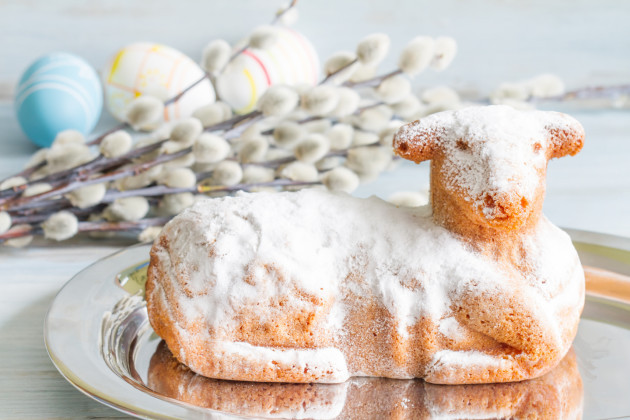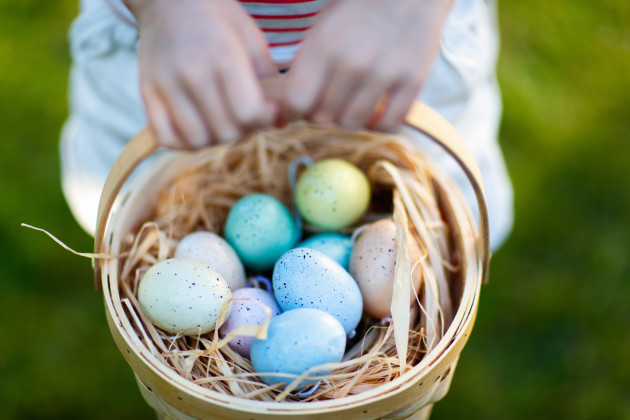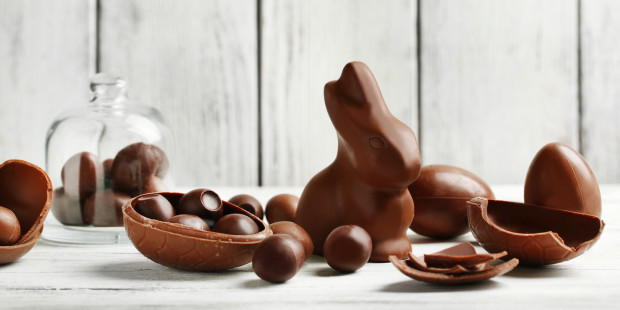Lenten Campaign 2025
This content is free of charge, as are all our articles.
Support us with a donation that is tax-deductible and enable us to continue to reach millions of readers.
At Easter we celebrate the resurrection of Christ, which is shown in the triumph of light over darkness, the renewal of nature, and the ringing out of joy. But what role do rabbits, chickens, eggs and bells have to play in all of this?
Whether you are Christian or not, almost everybody celebrates a form of Easter in one way or another. A number of countries have adopted the different traditions and symbols of this most important Christian feast, which is why this time of year you can find chocolate bunnies in supermarkets all over the world. But many people recognize and even take part in these celebratory symbols without really knowing their significance.
Of course, you probably know that Easter celebrates the resurrection of Christ after his crucifixion on Good Friday and the “passing over” from death to eternal life. In most Romance languages, Easter is known by some form of the word Pascha, derived from the Jewish feast of the Passover. According to the Gospels, Jesus’ Passion and death took place around Passover time, and Christians see the Passover account of the Israelites’ liberation from slavery in Egypt as a foreshadowing of the “Paschal mystery” of Jesus’ sacrifice.
But let’s focus on the five major symbols associated with this feast and their importance.
The triumph of light over darkness
Easter is celebrated on the Sunday that follows the first full moon of springtime. At this time of year the days become longer than the nights, heading toward the summer solstice. Light is therefore the most significant aspect of this feast. During the religious ceremonies at Easter, light is most powerfully used in the Easter Vigil ceremonies of kindling the new fire and lighting the Paschal candle, symbol of Christ’s resurrection.

Read more:
8 Fresh and unforgettable Easter dinner recipes
The lamb, a symbol of purity and goodness

This is the most ancient symbol of Easter and among religions it is also the most widespread too. In Islam, the lamb is sacrificed and eaten during Eid al-Adha, the feast that marks the 40 days after the end of Ramadan. And among Jews it is a reminder of the Passover lamb that was slaughtered to mark the doorposts of the Israelites’ houses against the angel of death, on the night when families fled Egypt under the leadership of Moses.
In the Christian religion, the lamb symbolizes the virtues of innocence, softness, and kindness, and obedience to the will of God, by referencing the sacrifice Abraham was ready to make of his own son when God demanded it. In the Gospel according to John, John the Baptist sees Jesus coming towards him and says: “Look, the Lamb of God, who takes away the sin of the world!” (John 1:29) The Book of Revelation uses the word lamb 28 times when referring to Christ.
In Alsace, in the north of France bordering Germany, they even make an adorable Easter cake in the shape of an Easter lamb called the lamala or osterlämmele. This lamb-shaped treat, covered in sugar, is a symbol of purity and innocence, and is meant to bring luck to all those who eat it. If you’d like to try this delicious French delicacy you could always follow this lamala Pinterest recipe and even start your own local tradition.
Bells ringing out with joy
For a long time we’ve relied on church bells to bring a sense of rhythm to our day. If parishes still ring their bells to call worshipers to Sunday Mass or to sound the time, we don’t hear them between Holy Thursday and the Easter Vigil on Holy Saturday night. Parishes that normally ring bells at the Sanctus and the Consecration of the Mass replace the bells for the Holy Thursday Mass and Good Friday services with wooden clappers. Church bells traditionally ring out at dawn on Easter Sunday, to announce the resurrection of Christ and the joy of the day. French legend has it that the church bells fly on their great waves of sound all the way to Rome to be blessed, and on their return they are filled with eggs that are scattered on the paths for well-behaved children to enjoy.
Eggs, as emblems of life and rebirth

The egg seems to have been the emblem of life, of fertility, and rebirth since time immemorial, with humans associating the hen and her chicks with infancy and maternity. Five thousand years ago, the Persians offered eggs to each other as spring approached and this has continued in some way or other into the present time.
Marking the end of Lent, a period of food deprivation that was adhered to strictly in years gone by, believers would distribute what their hens had produced during this period. And since the 13th century we have developed a tradition of painting eggs red to represent Christ’s blood. During the Renaissance hens’ eggs were replaced with golden eggs in royal courts. In the 19th century the Russian courts went that little further and created the distinct, elegant eggs from the jewelers at Fabergé. Ukrainians paint Easter eggs with intricate, colorful patterns, and today in the US there are many Easter egg coloring patterns to choose from.

Read more:
13 Gorgeous and unique DIY Easter egg designs
Chocolate eggs, however, are far more recent. Chocolate, the most delicious of treats, appeared in the European courts after the import of cacao from Central America, and was considered for a long time a luxury. In the 18th century the practice of pouring chocolate into an empty egg shell began. Then, in the 19th century, production was simplified by the development of iron molds in different shapes. The candy industry took it from there, to today’s worldwide consumption.
Where does the Easter bunny come from?
If tradition says that it was the bells that brought along the eggs in the Latin countries, where did the Easter bunny come from? Well, in Germanic countries, the white rabbit was responsible for that job, and in Anglo-Saxon countries, the hare. Both of these animals symbolize spring, renewal, and fertility. And in these countries children make little nests hoping that the rabbit will fill it with little treats!
This article was originally published in the French edition of Aleteia.

